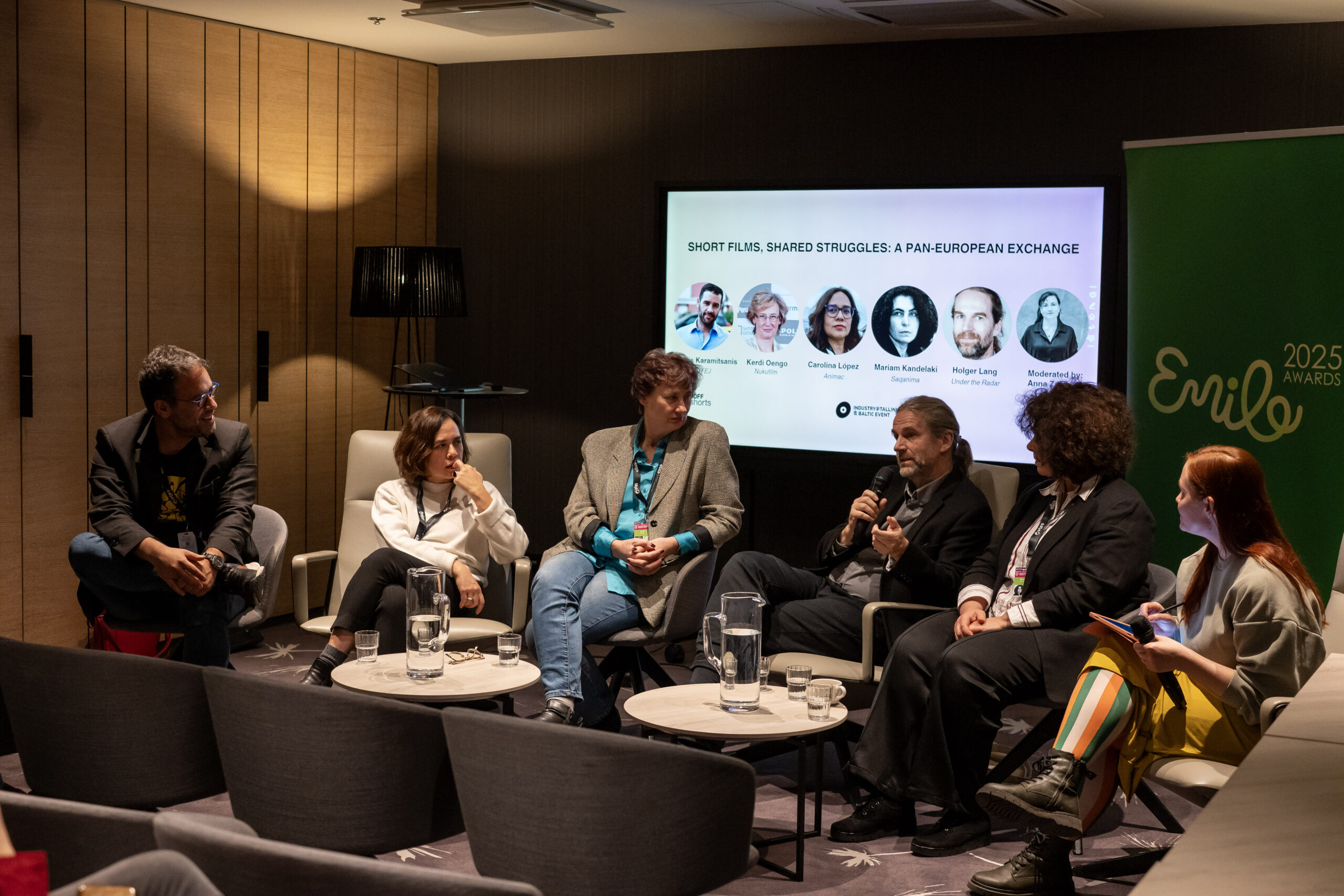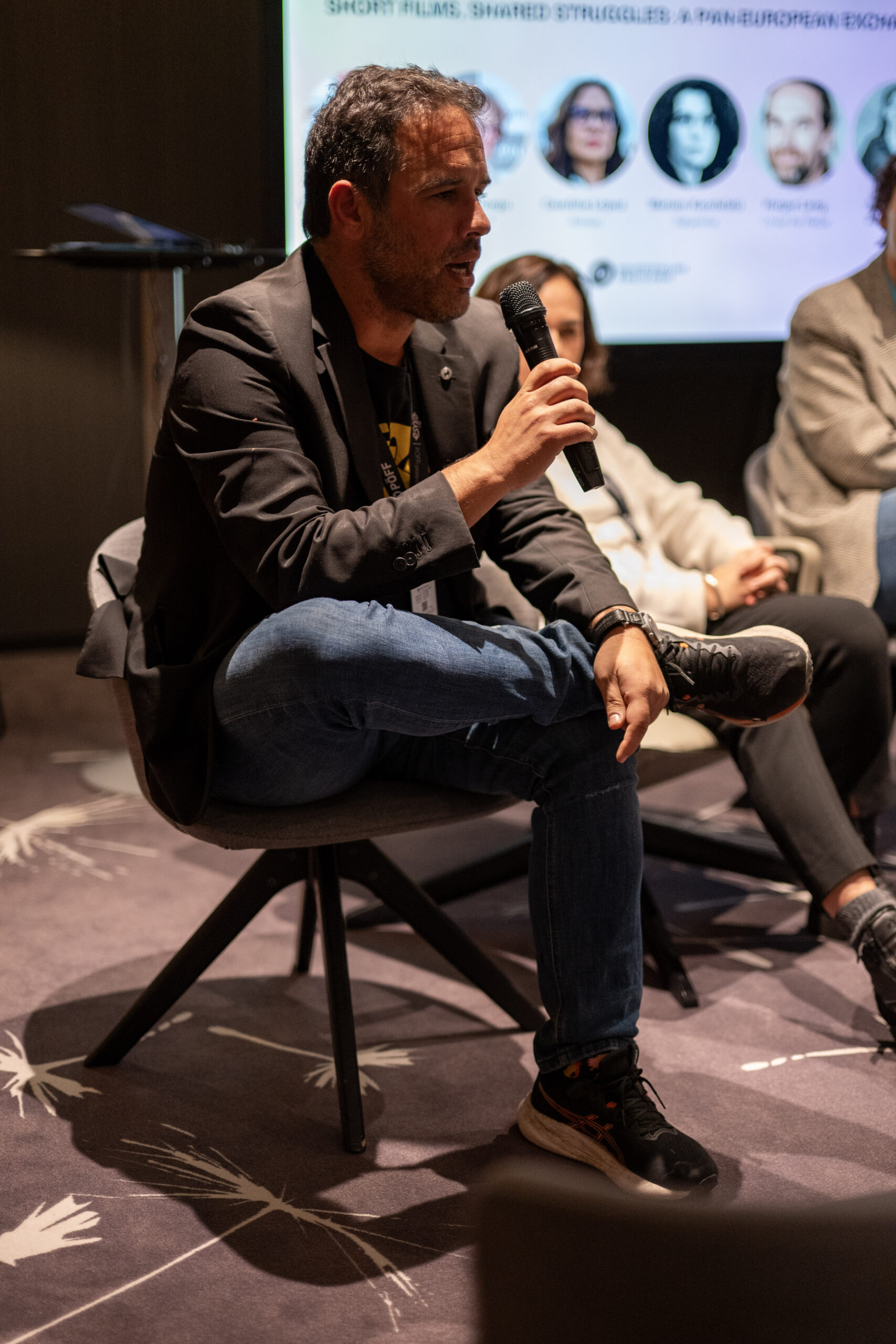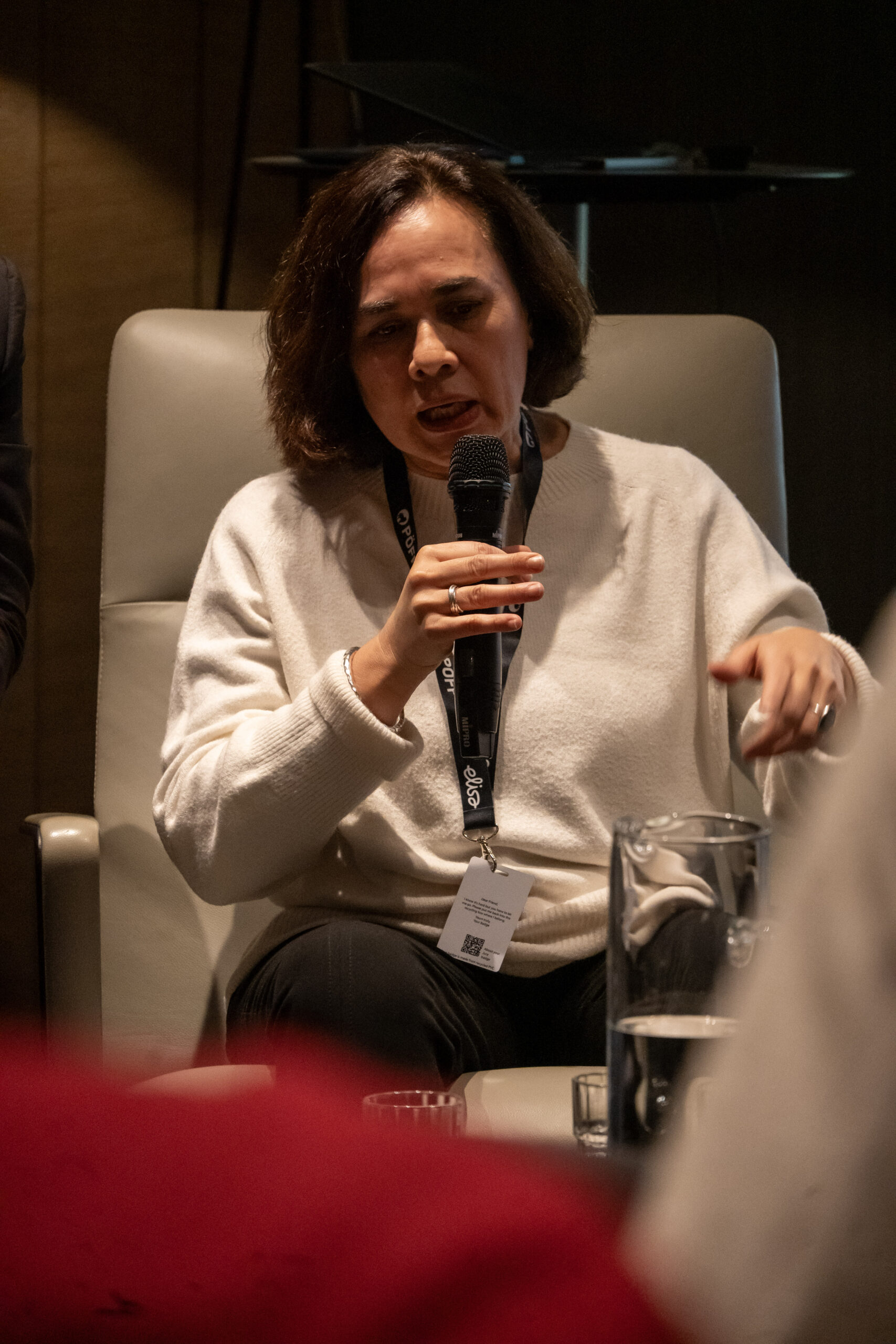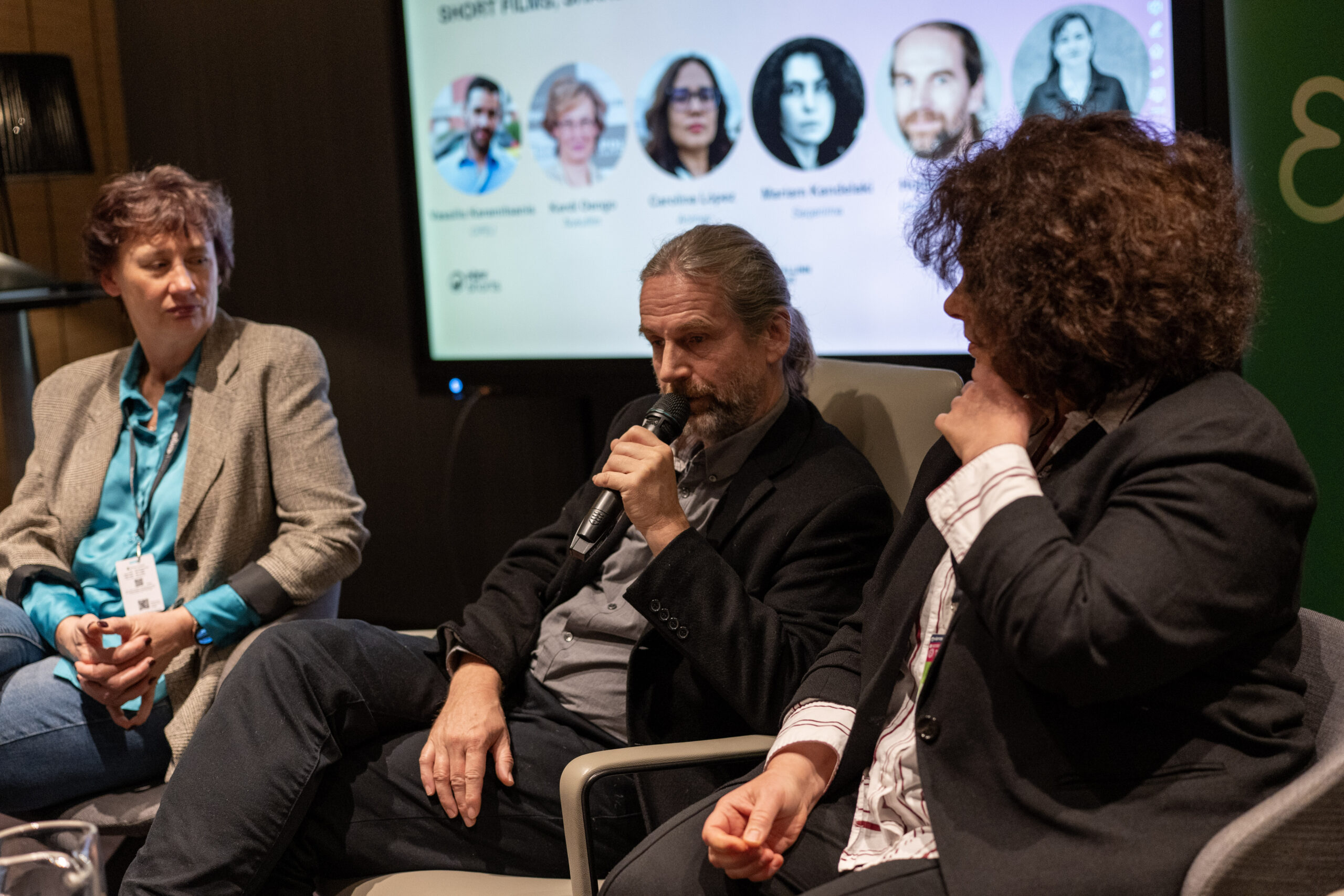This year Emile Awards gala was organized together with Estonian Animation Association, Black Nights Film Festival (PÖFF) and PÖFF Shorts (PÖFF-shorts).
In the framework of PÖFF Shorts Industry took place EAA panel discussion: Short Films, Shared Struggles: A Pan-European Exchange (In Collaboration with the Emile Awards). The panel was moderated by EAA board member Anna Zača (Latvia, film director) and the panelists were also EAA board members Vassilis Karamitsanis (EAA president, Greece, president on Animasyros IFF) Carolina López Caballero (Spain, Animac FF, Artistic director), Kerdi Oengo (Estonia, Nukufilm Studios, producer), Holger Lang (Austria, animation producer, Under_the_Radar festival director) Mariam Kandelaki (Georgia, Animators Association).
The discussion was about challenges in distributing and co-producing short animated films and brainstorming ways to address and communicate these issues at a European level.
There were covered 3 main topics:
Co-Production the new normal for animated shorts
Across the panel, a clear consensus emerged: co-production has become the default model, especially for countries or regions with limited funding capacity. What was once a strategic option is now a structural necessity.
Panelists described how smaller producers increasingly rely on minority co-productions to keep studios active, access regional funds, and secure local specialists. In Spain, this trend manifests internally between autonomous regions, while countries like Estonia and Latvia still manage single-country productions, but feel growing financial pressure.
Independent artists face a particular dilemma: co-production often introduces administrative complexity and shared creative control that conflicts with the intimate, handcrafted nature of many short animated films. As one panelist noted, the more partners you need, the less freedom your process allows.
Some territories face even more severe challenges: in parts of Eastern and Southern Europe, independent animation is shrinking or nearly absent due to a lack of national support.
Social Security: A Structural Weak Point
Perhaps the most urgent theme was the lack of social and economic security for animation workers across Europe.
Short-film production is inherently project-based. Specialists in narrow fields such as puppet animation or compositing tend to move frequently between countries, studios, and temporary contracts. As a result, many cannot maintain stable employment ties, pension contributions, or health insurance.
Panelists discussed cases where artists survive by combining several precarious statuses: self-employment, short-term contracts, or working informally. Examples from Southern Europe highlighted situations where legal employment becomes financially unsustainable due to extremely low wages.
Even countries with dedicated stipends or support mechanisms (like Estonia or certain France regions) offer only minimal safety nets. Meanwhile, institutions often treat animation as a marketable cultural product while failing to provide its creators with the same protections afforded to other cultural sectors, a contradiction repeated across Europe.
Distribution: The Persistent Short-Film Barrier
The panel concluded with a frank look at the distribution gap. Animated shorts rarely reach audiences outside festivals, and the structural barriers are significant.
A key “mechanical” issue is administrative: a screening block of eight short films requires eight sets of contracts, rights clearances, and payments far more complex than a single feature film. This along with a lack of short film watching traditions in the general audience discourages cinemas and platforms from including shorts in their regular programs.
Only a few countries, most notably France and Spain, maintain an ongoing tradition of theatrical short-film exhibition or television slots dedicated to shorts. Elsewhere in Europe, opportunities are either sporadic or entirely absent.
Without sustainable distribution, animated shorts remain dependent on festival exposure, which limits long-term visibility and makes career stability nearly impossible. This has direct consequences: burnout, talent drain, and cultural migration as artists leave the field.
Photos and videoclips can be downloaded here:







